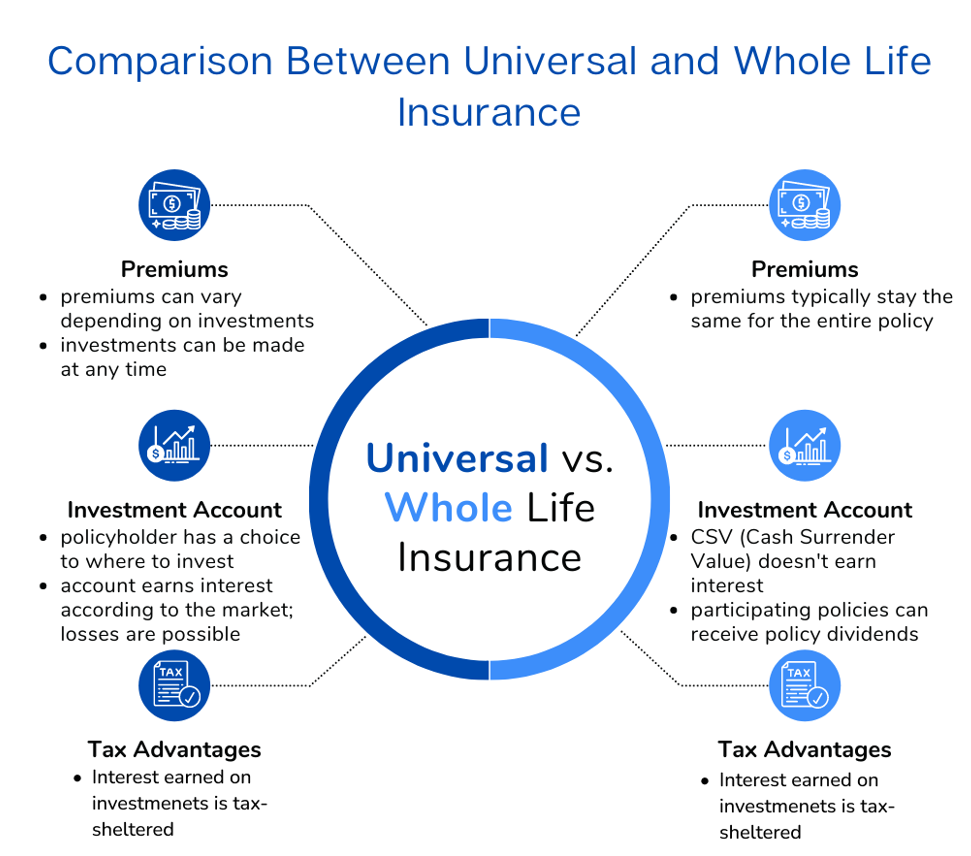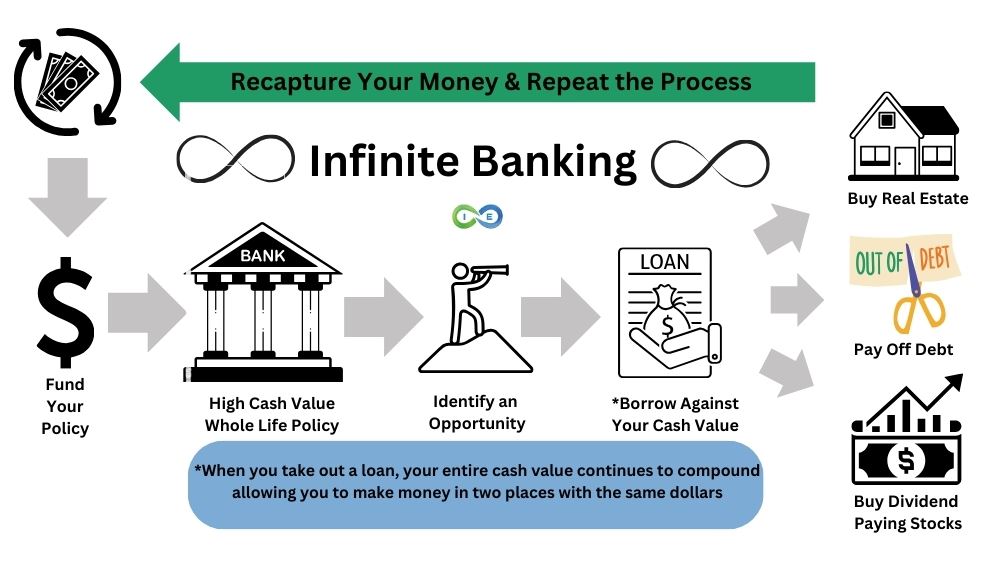All Categories
Featured
Table of Contents
Okay, to be fair you're truly "banking with an insurance provider" instead of "banking on yourself", however that concept is not as easy to sell. Why the term "limitless" financial? The idea is to have your cash functioning in numerous locations simultaneously, rather than in a single location. It's a bit like the concept of getting a residence with cash money, then borrowing against your home and putting the cash to function in one more investment.
Some people like to speak concerning the "speed of cash", which essentially suggests the exact same thing. Actually, you are just optimizing take advantage of, which works, yet, of course, works both means. Honestly, every one of these terms are scams, as you will see below. However that does not mean there is absolutely nothing worthwhile to this principle once you obtain past the marketing.
The whole life insurance policy industry is pestered by excessively expensive insurance, massive compensations, shady sales methods, low prices of return, and inadequately enlightened customers and salespeople. Yet if you intend to "Count on Yourself", you're mosting likely to need to fall to this industry and actually acquire entire life insurance coverage. There is no replacement.
The assurances intrinsic in this item are critical to its function. You can obtain against the majority of kinds of cash money value life insurance, however you shouldn't "bank" with them. As you get a whole life insurance plan to "bank" with, remember that this is an entirely different area of your financial strategy from the life insurance section.
Buy a huge fat term life insurance policy policy to do that. As you will see below, your "Infinite Banking" plan truly is not mosting likely to dependably give this important financial function. An additional trouble with the truth that IB/BOY/LEAP counts, at its core, on an entire life policy is that it can make acquiring a policy troublesome for most of those thinking about doing so.
Cut Bank Schools Infinite Campus
Dangerous leisure activities such as SCUBA diving, rock climbing, sky diving, or flying also do not blend well with life insurance coverage products. That may function out great, given that the point of the plan is not the death advantage, but remember that getting a plan on small kids is much more expensive than it must be since they are generally underwritten at a "conventional" price instead than a preferred one.

A lot of policies are structured to do one of two things. The majority of frequently, plans are structured to make best use of the payment to the agent selling it. Cynical? Yes. It's the truth. The payment on a whole life insurance coverage policy is 50-110% of the very first year's premium. Often plans are structured to make the most of the survivor benefit for the premiums paid.
With an IB/BOY/LEAP policy, your goal is not to optimize the death advantage per dollar in premium paid. Your objective is to optimize the cash money worth per buck in costs paid. The rate of return on the policy is very crucial. One of the finest ways to make best use of that element is to get as much cash as possible into the plan.
The very best method to improve the price of return of a plan is to have a fairly little "base plan", and after that placed even more cash right into it with "paid-up enhancements". Rather than asking "Exactly how little can I place in to obtain a certain death benefit?" the concern ends up being "How much can I lawfully placed into the plan?" With even more cash in the policy, there is more money value left after the prices of the survivor benefit are paid.
An extra advantage of a paid-up enhancement over a regular costs is that the payment rate is lower (like 3-4% rather of 50-110%) on paid-up enhancements than the base plan. The less you pay in payment, the higher your rate of return. The price of return on your cash value is still mosting likely to be negative for some time, like all cash money worth insurance plan.
However it is not interest-free. As a matter of fact, it might cost as high as 8%. The majority of insurance provider only offer "straight recognition" financings. With a straight recognition finance, if you obtain out $50K, the dividend rate put on the cash value yearly just puts on the $150K left in the policy.
Bank On Yourself Plan
With a non-direct acknowledgment financing, the business still pays the exact same returns, whether you have "obtained the money out" (practically against) the policy or otherwise. Crazy, right? Why would certainly they do that? That understands? They do. Frequently this function is coupled with some less advantageous aspect of the policy, such as a reduced returns price than you might get from a plan with direct acknowledgment fundings (ibc full form in banking).
The firms do not have a source of magic totally free cash, so what they give in one location in the policy should be drawn from an additional area. But if it is extracted from a function you care much less around and place into a function you care more about, that is an advantage for you.
There is one more important attribute, usually called "clean lendings". While it is wonderful to still have returns paid on money you have actually taken out of the plan, you still need to pay passion on that particular loan. If the returns price is 4% and the financing is charging 8%, you're not specifically coming out ahead.
With a wash loan, your finance rate of interest coincides as the dividend rate on the policy. While you are paying 5% interest on the car loan, that passion is totally balanced out by the 5% reward on the car loan. In that regard, it acts simply like you took out the cash from a financial institution account.

5%-5% = 0%-0%. Without all 3 of these aspects, this plan merely is not going to function really well for IB/BOY/LEAP. Virtually all of them stand to benefit from you buying right into this principle.
There are several insurance policy agents talking regarding IB/BOY/LEAP as an attribute of whole life who are not in fact marketing policies with the needed attributes to do it! The problem is that those who know the idea best have an enormous conflict of interest and usually inflate the benefits of the concept (and the underlying policy).
Royal Bank Visa Infinite Avion Travel Rewards
You need to contrast loaning versus your policy to withdrawing money from your interest-bearing account. Return to the start. When you have absolutely nothing. No deposit. No money in investments. No money in money worth life insurance. You are faced with an option. You can put the cash in the financial institution, you can spend it, or you can acquire an IB/BOY/LEAP plan.
You pay tax obligations on the interest each year. You can conserve some more cash and placed it back in the banking account to start to earn passion again.
When it comes time to buy the boat, you market the financial investment and pay tax obligations on your long term resources gains. You can conserve some more cash and get some more financial investments.
The cash money worth not utilized to pay for insurance coverage and compensations expands over the years at the returns rate without tax drag. It begins with unfavorable returns, however with any luck by year 5 or so has actually recovered cost and is growing at the returns price. When you most likely to purchase the boat, you obtain against the policy tax-free.
What Is A Cash Flow Banking System
As you pay it back, the money you paid back starts growing once more at the reward price. Those all job pretty likewise and you can contrast the after-tax rates of return.
They run your credit report and give you a financing. You pay rate of interest on the obtained money to the bank until the financing is repaid. When it is repaid, you have a nearly worthless boat and no cash. As you can see, that is not anything like the initial three alternatives.
Table of Contents
Latest Posts
Bank Concept
Banker Life Quotes
How To Create Your Own Bank
More
Latest Posts
Bank Concept
Banker Life Quotes
How To Create Your Own Bank